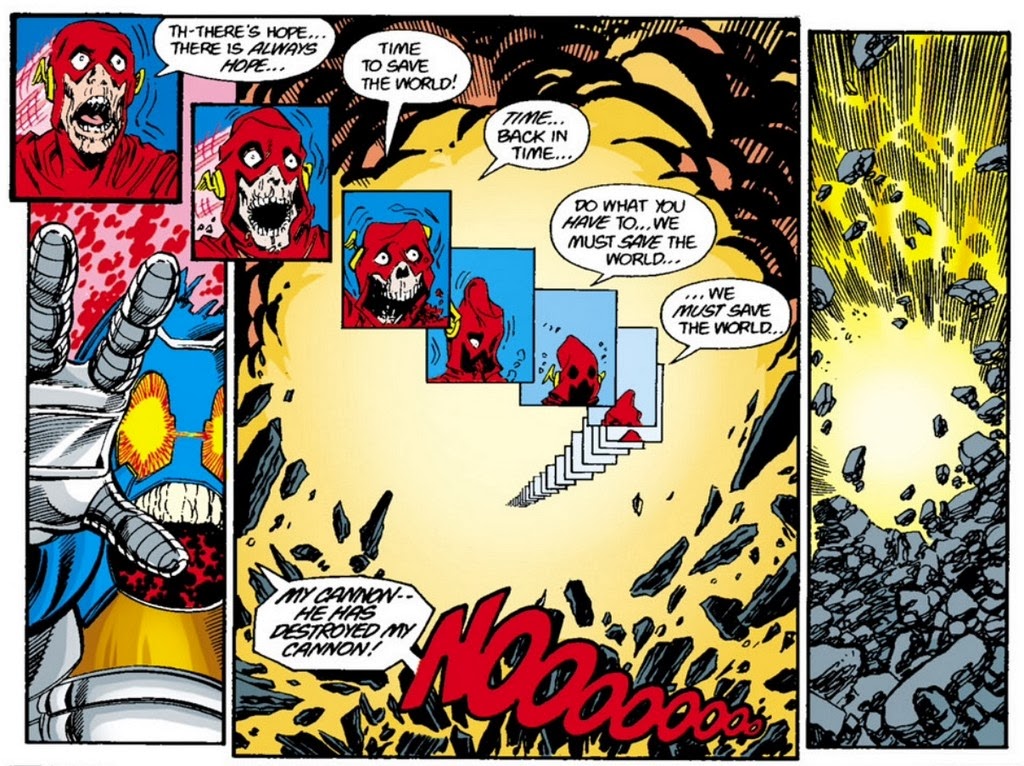I don't think it worked. I agree that it had a lot of heart. It was fun to watch. But there were a lot of obvious production problems that took the shine off the crossover for me. It actually reminded me of the SMALLVILLE finale where the writers scripted a global conflict and then found that when rendering it onscreen, they had to tone it down repeatedly until the visuals seemed marginal compared to the massive scale indicated by the dialogue.
The main problem for me -- the FLASH installment sets up Oliver, Supergirl and Barry as the lead characters for the crossover. But then ARROW immediately sidelines all three of them in subplots and dream sequences to focus on the ARROW supporting cast (the recruits, Cisco and Felicity) and LEGENDS again does the same with Mick, Vixen, Stein, Cisco and Felicity). It's like the writers suddenly discovered that they could not film three episodes of Melissa Benoist, Grant Gustin and Stephen Amell in a week -- so their appearances are prominent in THE FLASH and then their presences are spread out in isolated segments across ARROW and LEGENDS. That, along with budgetary restrictions suddenly reduces a planetary situation to a skirmish on a single rooftop.
Then there's awkward moments like Oliver inexplicably benching Supergirl (almost as though the actress' schedule prevented her from being in the subsequent scene and an explanation was improvised on the spot), street-level heroes winning against Dominators when the 1951 soldiers couldn't to hold them off, the Dominators having had a truce with the United States but inexplicably kidnapping and murdering the President previously in THE FLASH, no attempt to mind control the heroes again -- and it's at this point, I'm reminded of how awkward I found the first AVENGERS movie.
This is something we seem to see quite often in superhero shows when they attempt an Earth-wide threat, but they can't pull it off visually and try to bluff and bluster through it.
THE FLASH has previously pulled off epic-level conflicts by keeping the geography enclosed even as the emotional stakes peaked (Barry versus Thawne with Firestorm and Green Arrow in the mix in Season 1, the race against Zoom in Season 2). LEGENDS' epic finale in its first season spread the team across different locations while fighting henchmen. SUPERGIRL's action used blurriness and distance to suggest rather than show the titantic forces in conflict. ARROW has generally stuck to the street level stuff. But here, they attempted INDEPENDENCE DAY: RESURGENCE and they seemed to be trying to punch above their weight.
It's funny -- I'm saying over in the STAR TREK thread that shows do not die just because Bryan Fuller doesn't write them, but I longed for the Fuller-technique in "Invasion." With HEROES, Fuller knew that if superfights shown in full would (a) look really lame on a TV budget and (b) didn't actually offer much meaningful content no matter how much fans craved them.
As a result, fights were always extremely brief, seen at a distance or in the aftermath and the focus was always on giving the actors some interesting conflicts to perform against each other with the epic clash of superhumans always blasting off camera and then over by the time we panned across to see it.
But still. I give the DC TV team credit for trying and yes -- there was a lot of heart.
